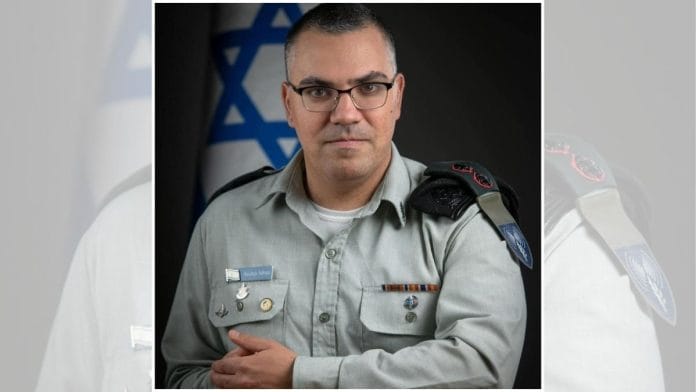New Delhi: The Israel Defence Forces (IDF) have given an indication of the geographical range of their targeted ground incursion into southern Lebanon—along the country’s longest-running river, the Litani.
IDF spokesperson to the Arab media Avichay Adraee warned residents that heavy fighting was ongoing in southern Lebanon, “with Hezbollah elements using the civilian environment and the population as human shields to launch attacks”.
The officer asked them not to move vehicles from the north to the southern region of the Litani River, “for your personal safety”. This warning was in effect until further notice, he said.
#عاجل ‼️ انذار عاجل إلى سكان جنوب لبنان
⭕️يدور في منطقة جنوب لبنان قتالًا عنيفًا حيث يستغل خلاله عناصر حزب الله البيئة المدنية والسكان دروعًا بشرية لشن الهجمات.
⭕️من أجل سلامتكم الشخصية نطالبكم بعدم التحرك بالمركبات من منطقة الشمال إلى منطقة جنوب نهر الليطاني.
⭕️هذا الإنذار… pic.twitter.com/xbpR9ntaf1
— افيخاي ادرعي (@AvichayAdraee) October 1, 2024
Another cautionary message followed a couple of hours later, in which Adraee asked the Lebanese to head further north of the Awali river, which is about 35 kilometres north of the Litani. This indicated the immediate scope of Israel’s incursion into the region, which began early Tuesday, for the first time since the Israel-Hezbollah war in 2006.
Adraee also asked residents of 26 villages in south Lebanon to evacuate, including in those where Iran-backed Hezbollah had little or no presence given they were inhabited by Christian communities.
#عاجل ? بيان عاجل لسكان #جنوب_لبنان في القرى التالية: يارون, عين ابل، مارون الراس, طيري, حداثا عيتا الجبل (الزط), جميجيمة, تولين، دير عامس، برج قلويه، البياضة، زبقين جبال البطم، صربين, الشعيتية, كنيسة, الحنية, معركة, غندورية، دير قنون – مالكية الساحل, برج الشمالي, ابل السقي,… pic.twitter.com/iKgx7m3oO4
— افيخاي ادرعي (@AvichayAdraee) October 1, 2024
Meanwhile, Israel’s incursion into southern Lebanon has been termed as a violation of the UN Security Council (UNSC) Resolution by the United Nations Interim Force in Lebanon (UNIFIL), adopted unanimously by the UNSC in August 2006 to end that war.
The UNIFIL in its statement added that Israel’s actions were a “violation of Lebanese sovereignty”.
https://twitter.com/UNIFIL_/status/1841045490802053520
The UNSC Resolution 1701 made Litani an important geographical marker as it was the northern border of the UN-designated buffer zone established after the 2006 Israel-Hezbollah war. But the resolution has been violated several times since.
In the last two weeks, Israel has escalated its military actions against Hezbollah, after nearly a year of the two sides launching strikes against one another. Hezbollah’s leader Hassan Nasrallah was killed in an Israeli airstrike last week.
The Shi’ite organisation has also faced a series of setbacks in recent weeks including an attack on its electronic communication systems—pagers and walkie-talkies—which left thousands injured and at least 32 dead.
Israel also opened a new front in Lebanon’s northern border after its government made it a priority to return nearly 60,000 civilians displaced from the region since Hezbollah began its strikes in October last year.
UN Security Council Resolution 1701
The call for evacuations south of the Litani is significant given that Hezbollah is not allowed to have any military presence in the area, as per the UNSC resolution to end the previous war between Israel and the armed militia.
Hezbollah, however, continues to operate in the region and has strengthened its military wing. Today, the Shi’ite militia is said to have one of the largest stockpiles of rockets for an armed group in the world. There has been no move made to disarm the organisation and in the years since 2006, has maintained a presence between the Blue Line and Litani.
“Security arrangements to prevent the resumption of hostilities, including the establishment between the Blue Line and the Litani river of an area free of any armed personnel, assets and weapons other than those of the Government of Lebanon and of UNIFIL as authorised in paragraph 11, deployed in this area,” the UNSC said in its resolution.
The Blue Line divides Israel from Lebanon and the Golan heights, and marks the withdrawal line of Israeli armed forces from the country in 2000.
The resolution says the area should be kept “free of any armed personnel”, which is understood as Hezbollah, given the group is not the official armed services of the Lebanese government, but rather a movement that was formed with support from Iran in 1982 during Israel’s invasion of Lebanon.
The distance between the Blue Line and the Litani River is roughly 20 kilometres at points, while at other places as close as about a kilometre. The Blue Line, formulated by the United Nations in 2000, is the line south of which Israel withdrew its troops.
Between the Litani and the Blue Line is the area within the UNIFIL, the peacekeeping force mandated by the UNSC operates, and consists of about 10,058 troops from over 50 countries, including India. There are 903 Indian peacekeepers as part of the UNIFIL mission.
Blue Line breached before Hamas attack
In the 18 years since the resolution was adopted, the region has seen numerous violations. Between February and June 2023, months before Hamas’ attack on Israel, the United Nations Secretary-General reported at least 24 rockets fired from South of the Litani across the Blue Line into Israel.
Tel Aviv in retaliation conducted airstrikes on three locations in southern Lebanon. The UNIFIL conducted around 489 anti-rocket counter operations on average per month between February and June 2023 in its attempt to enforce UNSC resolution 1701.
However, in the last year, the number of violations has increased significantly, with the UN Secretary-General reporting that UNIFIL recorded trajectories of at least 4,572 projectiles in the area—primarily rockets, mortar bombs and artillery shells.
Of the trajectories recorded, at least 1,540 were from Hezbollah, while 3,032 were launched from Israel according to the UN—an indication of the intense exchange of projectiles in the border region.
(Edited by Tikli Basu)






